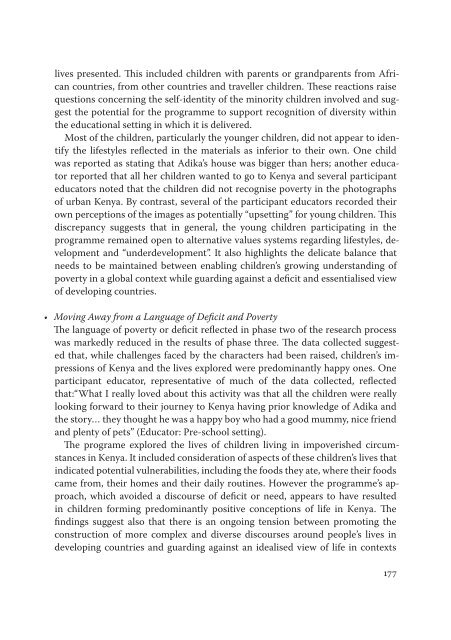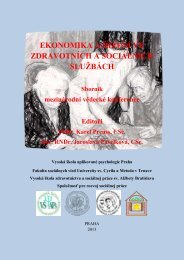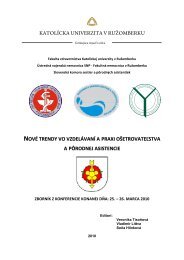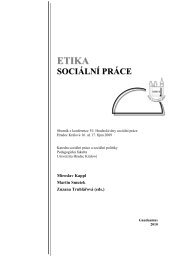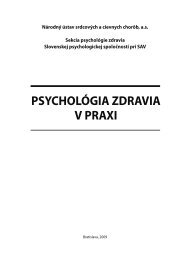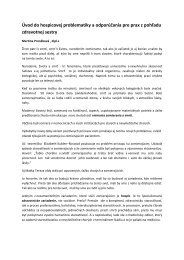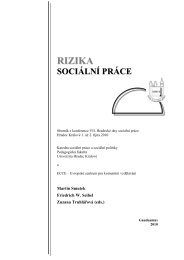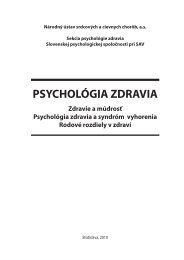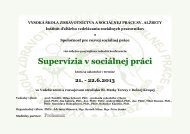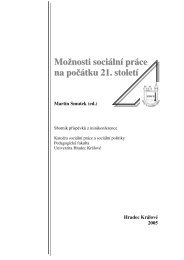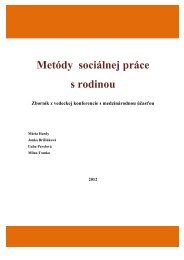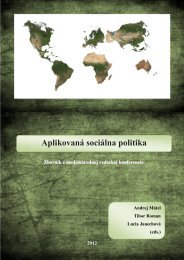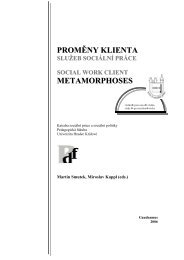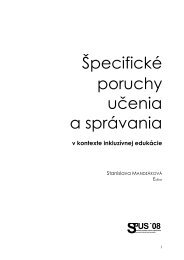Zmena klÃmy â možný dopad (nielen) na obyvateľstvo - Prohuman
Zmena klÃmy â možný dopad (nielen) na obyvateľstvo - Prohuman
Zmena klÃmy â možný dopad (nielen) na obyvateľstvo - Prohuman
Create successful ePaper yourself
Turn your PDF publications into a flip-book with our unique Google optimized e-Paper software.
lives presented. This included children with parents or grandparents from African<br />
countries, from other countries and traveller children. These reactions raise<br />
questions concerning the self-identity of the minority children involved and suggest<br />
the potential for the programme to support recognition of diversity within<br />
the educatio<strong>na</strong>l setting in which it is delivered.<br />
Most of the children, particularly the younger children, did not appear to identify<br />
the lifestyles reflected in the materials as inferior to their own. One child<br />
was reported as stating that Adika’s house was bigger than hers; another educator<br />
reported that all her children wanted to go to Kenya and several participant<br />
educators noted that the children did not recognise poverty in the photographs<br />
of urban Kenya. By contrast, several of the participant educators recorded their<br />
own perceptions of the images as potentially “upsetting” for young children. This<br />
discrepancy suggests that in general, the young children participating in the<br />
programme remained open to alter<strong>na</strong>tive values systems regarding lifestyles, development<br />
and “underdevelopment”. It also highlights the delicate balance that<br />
needs to be maintained between e<strong>na</strong>bling children’s growing understanding of<br />
poverty in a global context while guarding against a deficit and essentialised view<br />
of developing countries.<br />
• Moving Away from a Language of Deficit and Poverty<br />
The language of poverty or deficit reflected in phase two of the research process<br />
was markedly reduced in the results of phase three. The data collected suggested<br />
that, while challenges faced by the characters had been raised, children’s impressions<br />
of Kenya and the lives explored were predomi<strong>na</strong>ntly happy ones. One<br />
participant educator, representative of much of the data collected, reflected<br />
that:“What I really loved about this activity was that all the children were really<br />
looking forward to their journey to Kenya having prior knowledge of Adika and<br />
the story… they thought he was a happy boy who had a good mummy, nice friend<br />
and plenty of pets” (Educator: Pre-school setting).<br />
The programe explored the lives of children living in impoverished circumstances<br />
in Kenya. It included consideration of aspects of these children’s lives that<br />
indicated potential vulnerabilities, including the foods they ate, where their foods<br />
came from, their homes and their daily routines. However the programme’s approach,<br />
which avoided a discourse of deficit or need, appears to have resulted<br />
in children forming predomi<strong>na</strong>ntly positive conceptions of life in Kenya. The<br />
findings suggest also that there is an ongoing tension between promoting the<br />
construction of more complex and diverse discourses around people’s lives in<br />
developing countries and guarding against an idealised view of life in contexts<br />
177


